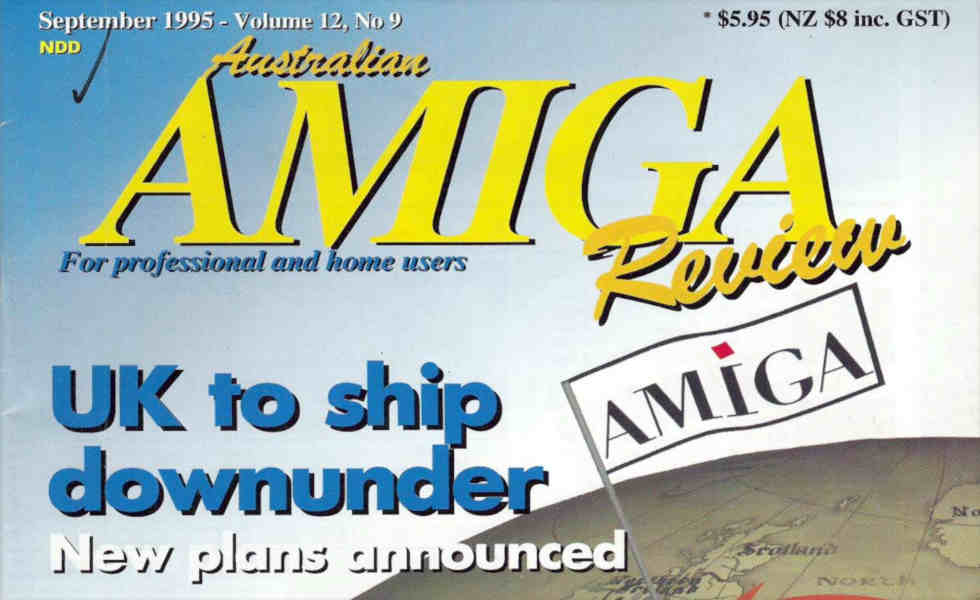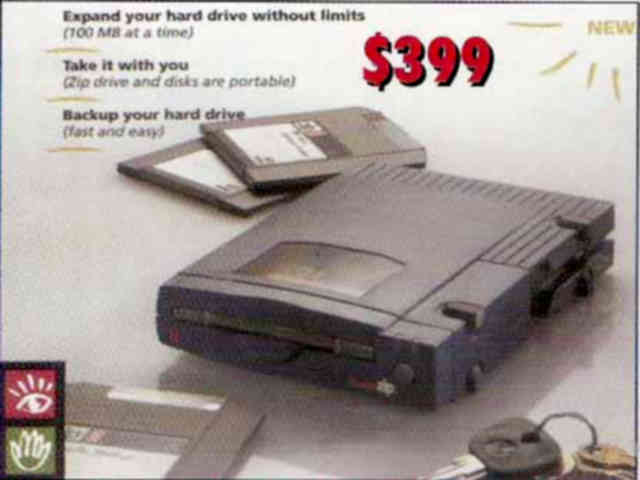Australian Amiga Review, September 1995
Published 24 October 2025

Feature Highlights
- Hot Amiga News – The latest developments in hardware and software.
- Amiga Netsurfing – Early exploration of the World Wide Web.
- Almathera Ten on Ten – CD-ROM super packs arrive for the Amiga.
Articles
- Guru-ROM – Speeding up GVP controllers.
- Net News – Regulation and connectivity in 1995.
- POSWIZ – Point-of-sale computing on Amiga.
- Aminet 7 and Prima 1 – New public domain CD-ROMs.
- Games – Speedball II, Super Skidmarks, PGA Tour, ViroCop.
- Modemspeak – AT commands made easy.
Editorial Reflections – Amigas Headed Downunder
In his September 1995 editorial, Andrew Farrell wrote with cautious optimism from the desk of Amiga Review.
He opened with a familiar mix of hope and frustration: each month there was something positive to share,
but progress came in oh so small
increments.
The news that German company ESCOM—the then–new owners of Amiga Technologies—had
finally set up UK distribution gave him reason to believe that Australia's own Amiga revival might be just weeks away.
The editorial, titled Amigas Headed Downunder,
captures a moment of suspended anticipation,
when enthusiasts across the country were waiting to see whether the platform could rise again after Commodore's fall.
Farrell's column speaks to the reality of mid–1990s computing: the Amiga remained technically elegant, but the world had shifted. The multimedia boom was being driven by CD-ROMs and Windows-based software, not by the Amiga's loyal developer base. His suggestion was pragmatic rather than nostalgic. Instead of rebuilding what Microsoft already had—like the popular Encarta encyclopedia—he proposed that Amiga developers create front–end readers capable of interpreting the growing library of PC CD-ROM titles. With a bit of reverse engineering and a clever interface, he believed the Amiga could read, browse, and even play many of the same titles that were pushing the home computer market forward. It was a characteristically inventive Amiga solution: do more with less, and do it with style.
Reading this editorial today, one can sense both the ingenuity and the quiet desperation of the period.
Farrell was asking developers to bridge two worlds—to make the Amiga compatible with the dominant PC ecosystem without losing its soul.
He even imagined a version of MYST running on a fast Amiga,
seeing in it not just a game but a symbol of what might have been.
The reality, of course, was harsher: by the time Amiga Technologies" distribution reached Australia, the market had already moved on.
The CD-ROM gold rush was over, and the Internet had begun rewriting the rules once again.
Yet Farrell's piece remains emblematic of the Amiga spirit: resourceful, undaunted, and deeply creative. His words capture a community unwilling to surrender its vision, even as the industry shifted beneath it. The Amiga never did reclaim its former glory, but in moments like this editorial, its unique imagination burned as brightly as ever.
IOMEGA ZIP Drive – 100MB of Portable Power

Nestled among the advertisements in the September 1995 issue was a product that perfectly captured the promise of mid–’90s computing: the IOMEGA ZIP Drive. Boasting a then–impressive 100 MB capacity and a sleek, futuristic design, it offered a glimpse into the next generation of personal storage. For many enthusiasts, this was liberation from the endless shuffle of floppy disks — finally, a portable medium that felt both professional and attainable.
By 1995 I had already moved on to an Intel 486 DX2/66 system with a modest 200 MB hard drive,
and the idea of adding five times that storage on a single removable disk felt revolutionary.
When I eventually purchased a ZIP Drive, it became an indispensable tool—fast, simple, and surprisingly robust.
While history has not always been kind to the ZIP Drive's reputation (with tales of the infamous click of death
),
my own experience was trouble–free.
Each cartridge felt satisfyingly solid, a tangible embodiment of digital progress.
In hindsight, I wish the Amiga platform had embraced the ZIP standard sooner. The 100 MB disks would have spared countless floppy swaps and neatly bridged the gap between vintage ingenuity and modern convenience. For a brief, shining moment, the ZIP Drive made data feel truly portable—and it was glorious.
Read the Magazine
Served via the Internet Archive’s BookReader. If the embed doesn’t load, open the magazine in a new tab .



